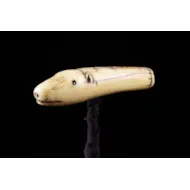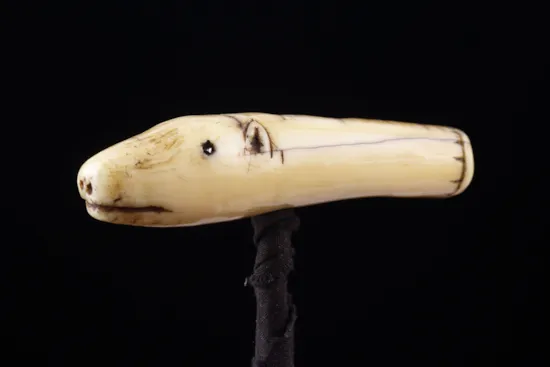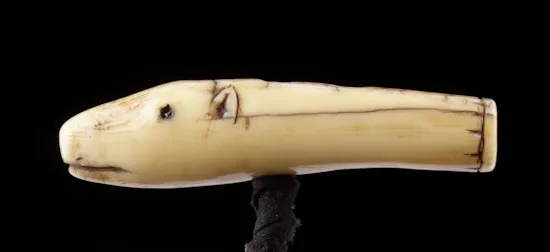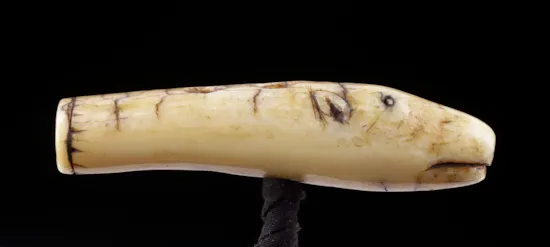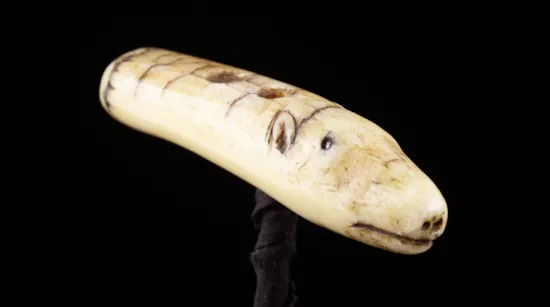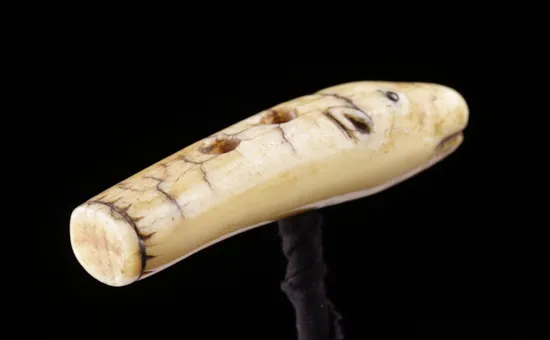Arctic Bering Strait Walrus Ivory Toggle of a Seal
An Arctic Bering Strait Walrus Ivory Toggle of a Seal with Two Drilled Holes the Eyes Inlaid with Pyrites
Superb colour and glossy patina
Late 18th Century / Early 19th Century
Size: 1.5cm high, 7cm long, 2cm wide - ⁵⁄₈ ins high, 2¾ ins long, ¾ ins wide
Superb colour and glossy patina
Late 18th Century / Early 19th Century
Size: 1.5cm high, 7cm long, 2cm wide - ⁵⁄₈ ins high, 2¾ ins long, ¾ ins wide
An Arctic Bering Strait Walrus Ivory Toggle of a Seal with Two Drilled Holes the Eyes Inlaid with Pyrites
Superb colour and glossy patina
Late 18th Century / Early 19th Century
Size: 1.5cm high, 7cm long, 2cm wide - ⁵⁄₈ ins high, 2¾ ins long, ¾ ins wide
Superb colour and glossy patina
Late 18th Century / Early 19th Century
Size: 1.5cm high, 7cm long, 2cm wide - ⁵⁄₈ ins high, 2¾ ins long, ¾ ins wide
The Eskimo and their predecessors on the Bering Strait were most probably the first people in the world to carve walrus ivory. In the Arctic, driftwood was a rare commodity with walrus ivory much more readily available to use to carve objects and hunting implements. Of all the animals that exist in the Arctic none has been more important to human survival than the walrus. Every part of its body was used to manufacture a wide variety of essentials for everyday Eskimo existence. It provided food, the blubber was used for cooking oil, heating and lighting. The skin was used for clothing, making kayaks and the roofs of houses. The sinew and guts provided cords and lines and the bone and ivory were fashioned into tools and art objects.
Arctic Bering Strait Walrus Ivory Toggle of a Seal
